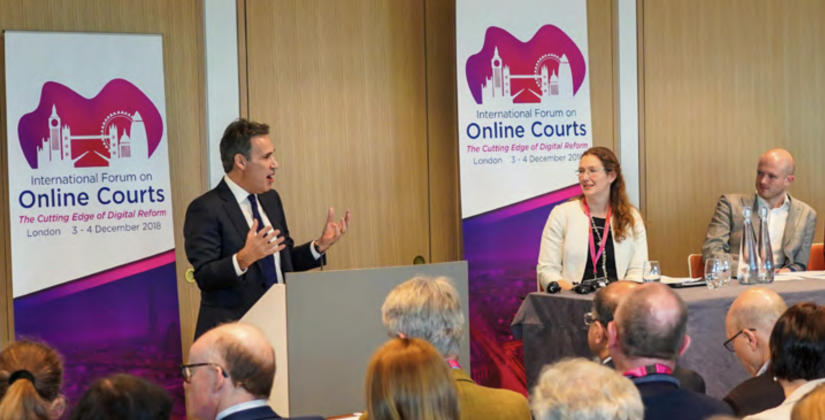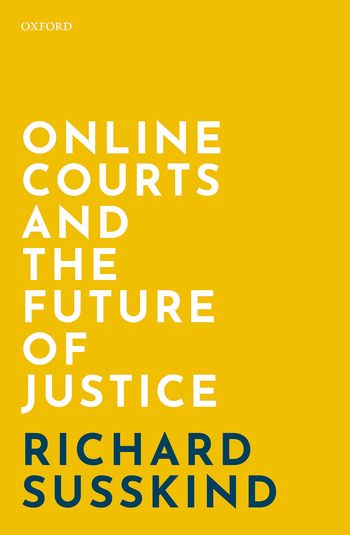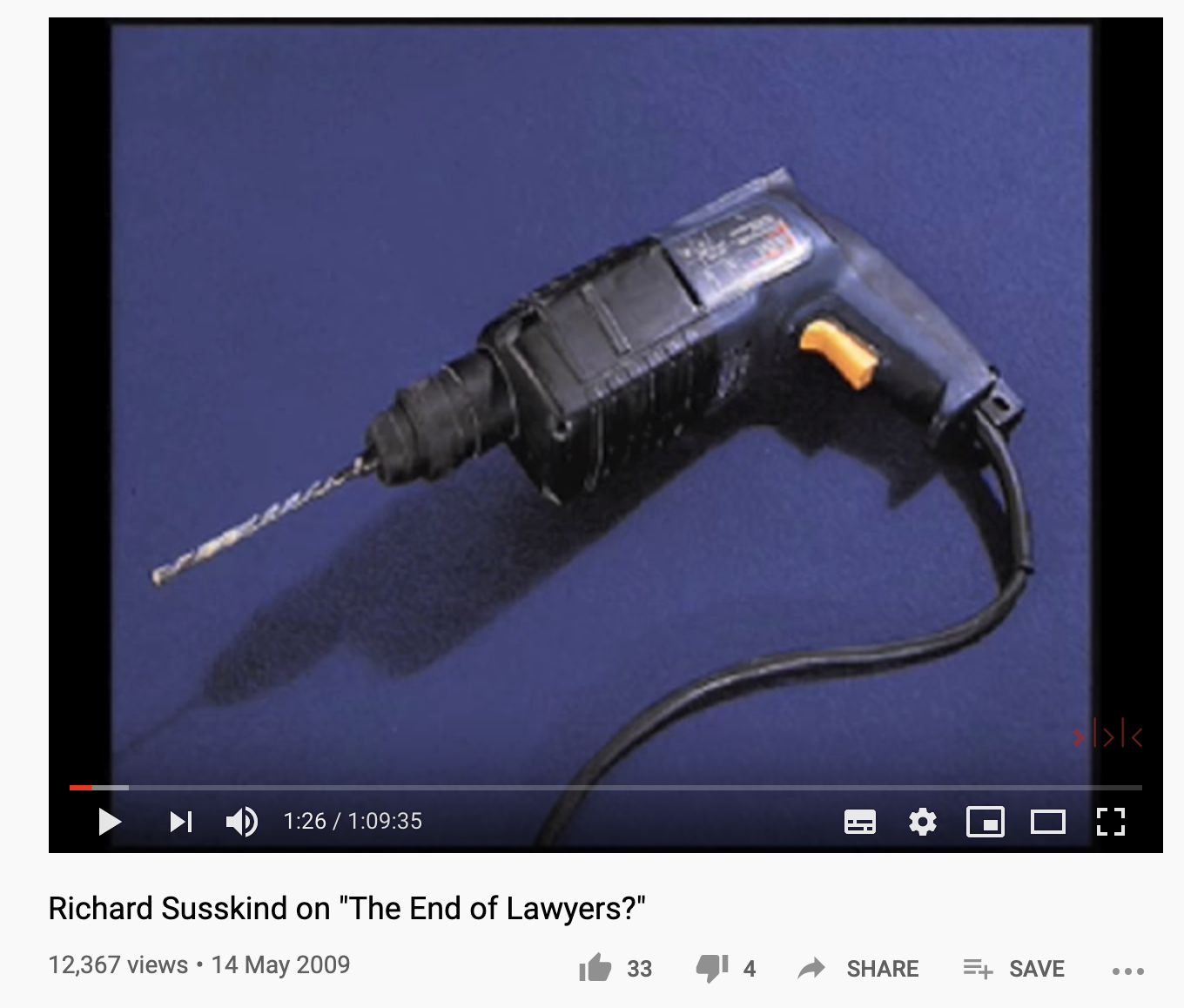Book review: Online Courts and the Future of Justice by Richard Susskind
Paul Magrath considers what has proved to be a timely and prophetic book about moving the conduct of litigation away from the physical courtroom

Where once they might have been viewed with comforting detachment as “the future of justice”, online courts have been brought by recent events into a horribly urgent present. For a world in the grip of contagion, they may be the only way of enabling the administration of justice to survive.
Therefore, having read this book at leisure, I feel I must now report on it at speed. But unlike all the current advice on videoconferencing and remote hearings, this book is less an instruction manual and more a treatise on the philosophy and practice of justice. It represents a summation of Susskind’s work in this area over the course of a career built around the nexus between law and technology. Above all, it is about how to make justice better.
That may come as a surprise. Some people regard the development of online justice as a cynical ploy to save money, reduce the human factor, and deliver justice on the cheap: what you might call “Robocop Justice”. That may or may not be the thinking behind some of the developments that his work has inspired or been used to justify. I don’t believe it’s what Susskind intended.
A fundamental vision
Susskind is well known in our own jurisdiction as a long term advocate of law tech, court reform and, more recently, of online dispute resolution. He is President of the Society for Computers and Law. Since 1998 he has served as Technology Adviser to the Lord Chief Justice, advising in turn Lords Bingham, Woolf, Phillips, Judge, Thomas and now Burnett.
He chaired the Online Dispute Resolution Advisory Group of the Civil Justice Council of England and Wales, set up by Lord Dyson in 2014, which published a report in February 2015 on the subject of online dispute resolution:
“I believe we laid out there, for the first time anywhere, the fundamental vision for the widespread introduction of online courts to justice systems around the world.”
Initially, he says, online dispute resolution (ODR) was regarded as a sub-set of alternative dispute resolution (ADR), a mechanism for sidestepping the cumbersome court process and reaching a resolution by alternative means. But why not embrace the technology to transform the court process itself?
“We imagined a court system that was as easy to use as Amazon, a service that was affordable to the overwhelming majority of citizens, accessible for the disabled who cannot easily attend physical hearings in courtrooms, a set-up that was more natural and intuitive for the internet generation.”
Inspiration for the idea came from early news of British Columbia’s Civil Resolution Tribunal, an online service that was launched in July 2016 – although that was developed outside the traditional court system, rather than as a replacement. However, as a public sector service the CRT has proved massively successful in dealing with small civil damages and debt claims and, more recently, things like housing and traffic disputes.
The three-tier system proposed by the Civil Justice Council’s ODR Advisory Group was very similar to the way the CRT now works. The proposals were endorsed by JUSTICE in a publication entitled Delivering Justice in an Age of Austerity, and were championed by Lord Briggs in his interim (2015) and subsequently final (2016) report on the structure of the civil courts. By then the Lord Chancellor, Michael Gove, had also lent his support and, in November 2015, HM Treasury had announced that “more than £700m” would be invested to “modernise and fully digitise the courts”.
So if what Susskind calls the “world’s most ambitious court reform programme … currently being conducted in England and Wales” is a success, he will no doubt get some of the credit for it. But while he may have provided the inspiration and vision for this project, which is now expected to cost more than £1bn, he is not in charge of it and prudently distances himself from what might turn out to be yet another Big Government IT Disaster. (There have been quite a few.)
This is not a drill
In considering online courts and the digitisation of justice, Susskind urges us to focus on outcome rather than process. He cites his well-worn anecdote about the manufacturer of power tools that tells its new recruits that what their customers want is not an electric drill but a hole in the wall.
In the same way, what people want is not a professional person’s service as such, but the outcome it provides, in the form both of a job done and the satisfaction of knowing there’s something else they can stop worrying about. If these outcomes can be delivered in a new way, the market will switch.
“It follows that litigants do not really want courts, judges, lawyers, rules of procedure, and the rest. More likely, they want not to have a problem at all. Or to have their disputes resolved fairly and with finality.”
One might object, of course, that some people want a power drill because it looks cool, bolsters their self-esteem as a DIY superhero, or just to keep up with the neighbours, in the same way that they might want a flashier car than their neighbour, and not simply in order to get from A to B. When it comes to law, however, while there may be something similar for those clients (like the sheikh from Dubai who paraded seven barristers, five of them silks, in a recent divorce case) who hire lawyers as a show of power and prestige, there are undoubtedly others for whom the performance of justice itself holds an attraction. They include, of course, many lawyers as well as commentators and indeed perhaps anyone who doesn’t actually have to pay for it.
We might call this the “Romance of Steam” approach: the wood-panelled old court rooms, the wigs and gowns, the ancient precedents from leather-bound volumes, and the anachronistic language peppered with Latinisms and medieval French all offering an assurance of the time-honoured legitimacy of the process, whose outcome may or may not be the one desired, and whose costs may well exceed the value of the dispute.
But in truth, few courts resemble this Romance of Steam model. Most of them are prosaic spaces, often in badly maintained buildings of no great architectural pretension, harshly lit and sparsely furnished, with lifts that don’t work and leaks in the roof, but somehow chugging along like the dirty old warhorses of diesel-electric locomotion. That said, many of the innovations discussed in this book have a similarly creaky and inadequate feel about them in practice, such as the flickering video links which have been in use for years and still, in the age of the webinar and the videoconference, seem very underpowered. But they will get better, says Susskind.
Forms of justice
A key part of the Susskind’s thesis revolves around what we mean by justice, since it is only by understanding what courts are attempting to achieve that we can sensibly assess whether and how any online version might improve on it. He breaks the idea of “justice according to the law” into seven aspects:
1. Substantive justice (fair decisions)
2. Procedural justice (fair process)
3. Open justice (transparent)
4. Distributive justice (accessible to all)
5. Proportionate justice (appropriately balanced)
6. Enforceable justice (backed by the state)
7. Sustainable justice (sufficiently resourced)
Again, these are not evenly respected or delivered either by the current system or by what he proposes. No system is perfect and there are compromises to be made whatever system you use. The question is one of priority.
Faced, for example, with Brazil’s situation of having over 100 million cases pending in the civil courts, would it not make sense to offer litigants a less perfect but more conclusive alternative of decisions arrived at by an algorithm designed to mimic the decision-making processes of previous similar cases? This is akin to saying some justice is better than no justice (given that justice egregiously delayed is effectively justice denied).
When it comes to open justice, traditional courts (public hearings) offer greater “real time transparency” (the ability to see what is going on at the time) but much less “information transparency” (the ability to capture, store and analyse data about proceedings) than online courts. But it should be possible to have both, if the traditional courts can digitise their documentary processes and record their hearings while also providing the real time experience of advocacy.
Distributive justice requires that the court service is accessible and intelligible to all; yet “in most legal systems, it is the most commonly unimplemented principle of all.”
We tend to think of online courts and processes as an alternative to the well established justice systems in developed nations with a tradition of democracy and respect for the rule of law. But what of those parts of the world where a the rule of law is aspirational rather than real and a functioning justice system is little more than a long term development goal? Would something quick and digital not be a more realistic solution, particularly given the growing access to the internet via mobile smart device technology among peoples in otherwise underdeveloped territories lacking the physical infrastructure necessary for a traditional court system?
Susskind urges us to think with Voltaire in recalling that “the best is enemy of the good”. We should seek improvement, he says, not perfection.
“In the context of online courts, critics should therefore be cautious about comparing online courts with some ideal and yet simply unaffordable or unattainable conventional court service.”
Does justice have to take place in a physical space? If you strip away the symbolism and theatre, the answer is: not necessarily.
“In practice, court services of the future will be delivered as a blend of some or all of physical courtrooms, virtual hearings, and online courts”.
Which is used, and at what point, will be a matter of case management. “And, over time,” Susskind expects, the default will shift and “more and more elements will be conducted online.” He explores the mechanics of online case hearing (which can be either synchronous – with parties all involved at the same time — or asynchronous, where parties submit their evidence and arguments at different times) and the different levels and types of judicial engagement. He does not mandate any particular model; rather, he offers a catalogue of possibilities.
The future has arrived
Susskind quotes William Gibson’s observation that “the future has arrived; it’s just not evenly distributed yet”.
One might equally observe that “justice has arrived, it’s just not evenly distributed yet”. But the justice system of the future will change all that. It will serve up neither the Romance of Steam nor, one hopes, Robocop Justice. Instead, it will offer a combination of the best of traditional court hearings for those few cases that really demand it and the modernised online version offering swift, accessible, user-friendly dispute resolution for everyone else. “Online courts, as proposed here, are a clear illustration of transformation and not automation.”
Towards the end of the book, Susskind invites us
“in arriving at your verdict on the desirability of online courts, not to focus on their current shortcomings but instead to consider whether their introduction would represent an improvement on our traditional court systems.”
In normal times, we could have gone on arguing about this for as long as the projected development itself. But these are not normal times. It will be interesting to see how the current necessity to default to virtual and online justice affects not just the development of the online courts of the future, but their acceptance by those – both inside and outside the legal profession – who have hitherto had the gravest doubts about them.

Online Courts and the Future of Justice, by Richard Susskind (Oxford University Press, £18.99) is available from Wildy & Sons Ltd
Featured image (top): Susskind speaking at the International Forum on Online Courts in December 2018, alongside Susan Ackland-Hood, CEO of HMCTS.
